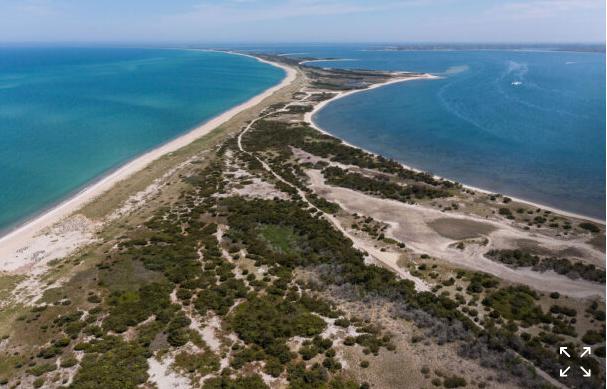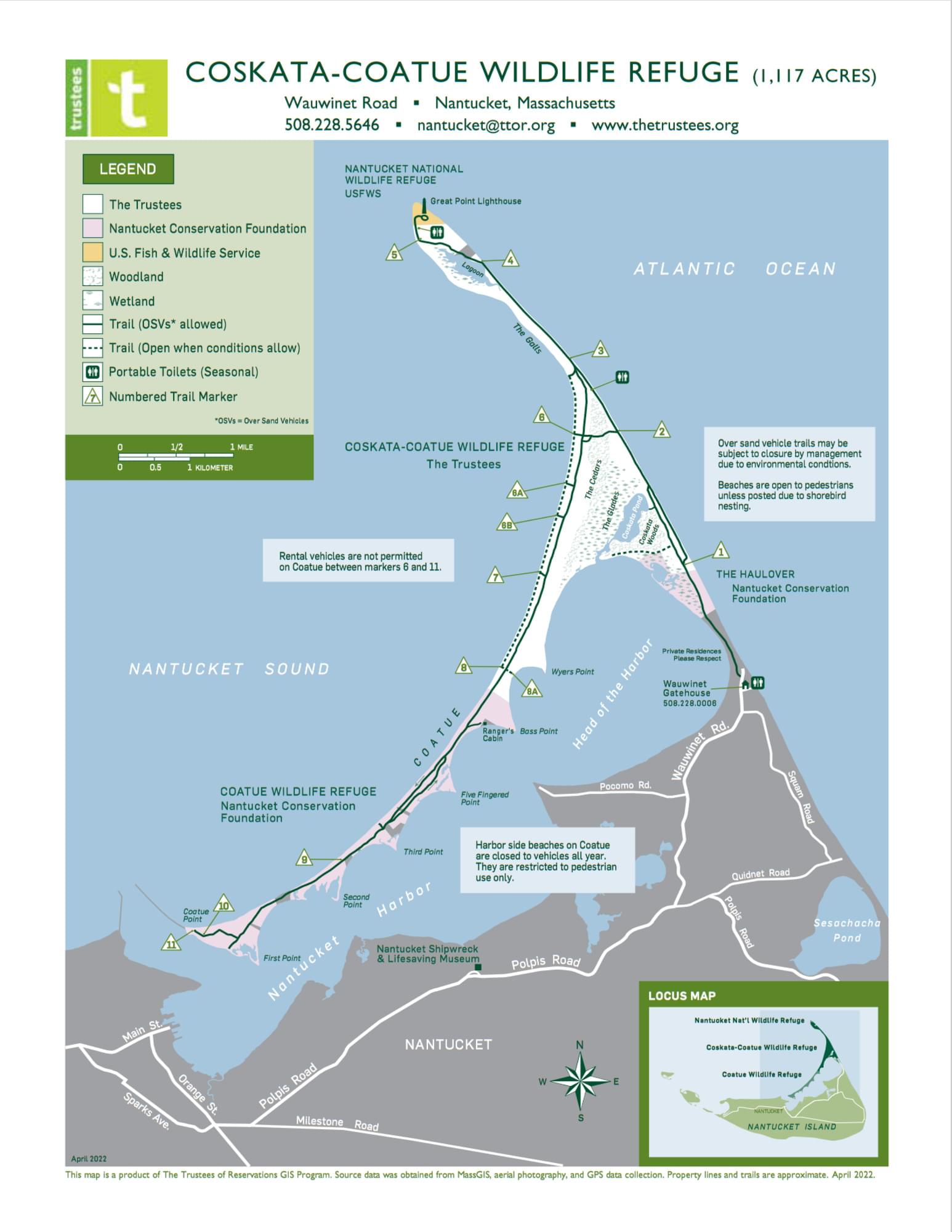Coskata-Coatue Wildlife Refuge

Coskata-Coatue Wildlife Refuge
The Trustees of Reservations Nantucket, Massachusetts 02554
Coskata-Coatue Wildlife Refuge Official WebsiteCoskata-Coatue Wildlife Refuge map
Tips for Birding
When submitting eBird observations at Coskata-Coatue Wildlife Refuge, it is most helpful to start a new checklist for each hotspot in the refuge. Use the general hotspot when you have a checklist that includes multiple locations or if no other hotspot or personal location is appropriate for your sightings.
About Coskata-Coatue Wildlife Refuge
See all hotspots at Coskata-Coatue Wildlife Refuge
Three entities own the vast majority of these acres, forming a large wildlife refuge system encompassing four parcels: The Trustees’ Coskata-Coatue Wildlife Refuge; The Haulover and Coatue Wildlife Refuge, both held by the Nantucket Conservation Foundation (NCF); and the Nantucket National Wildlife Refuge at Great Point, which is owned by the U.S. Fish and Wildlife Service (USFWS). Several small lots scattered throughout the Refuge are in private hands.
A ruggedly beautiful coastal environment where deer, raptors, seals, and shorebirds play.
Rolling maritime dunes cover hundreds of acres and support bayberry, beach plum, heather, and beach grass. The Cedars, a red cedar savannah and woodland facing away from Coskata Beach and the Head of the Harbor, is the largest of its kind in New England. Coskata Woods is a mature maritime oak forest that contains gnarled, wind-blown trees. Gray and harbor seals feed on fish and invertebrates in the Great Point riptide and use the nearby beach as a haul-out.
Explore 16 miles of oversand vehicle routes and walking trails including the popular Beach Trail, Inside Trail, and Coskata Woods Trail, plus miles of beachfront. A trip to Great Point at the extreme northwest tip of the refuge is recommended, as is a visit to the lighthouse (open seasonally), which has been aiding mariners for three centuries.
Hiking from the Wauwinet Gatehouse to the refuge is popular, all hikers are advised to wear proper hiking footwear, bring water, and allow enough time before sunset. Please only embark if you’re prepared for a strenuous hike across soft sands. Salt marsh mosquitoes and greenhead flies can be prevalent during July and August. Hunting is allowed so wear bright colors during hunting season. Dogs must always be on a leash.
The Refuge is free for all pedestrians, and pedestrians may park at the Wauwinet Gatehouse during the off-season. During the on-season, parking for pedestrians is along Wauwinet Road. Pedestrians must stay on marked OSV trails and never walk through the dunes. Please respect our neighbors and do not use private property to access the water’s edge. Please see ‘Ideas for Your Visit’ for more pedestrian information.
A station to deflate your vehicle tires is located near the gatehouse—drivers are required to deflate to 12-15 PSI before entering the Refuge. There is an air station just south of the Wauwinet Gatehouse for re-inflating your tires.
Features
Restrooms on site
Roadside viewing
Wheelchair accessible trail
Entrance fee
Content from Coskata-Coatue Wildlife Refuge Official Website
Last updated March 24, 2024
